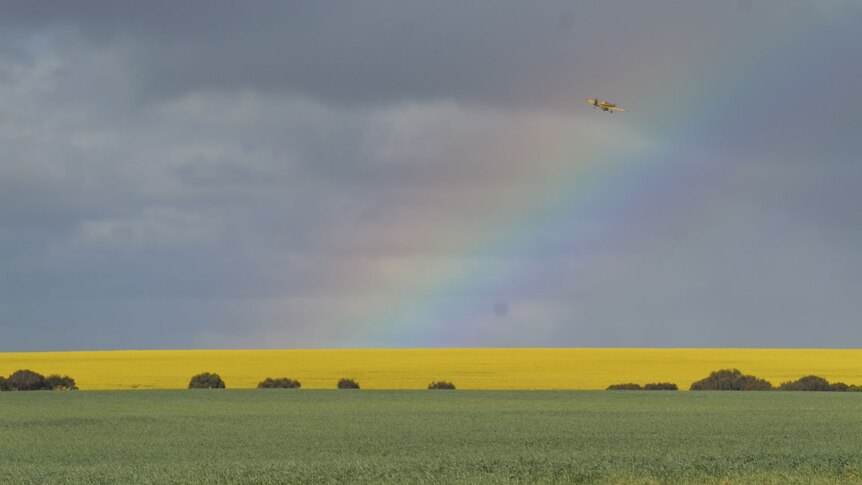Australia Weather News

Farmers are moving quickly to prepare paddocks after recent rain. (ABC Great Southern: Mark Bennett)
Farmers in and around Esperance, 700 kilometres south-east of Perth, could be the biggest beneficiaries of cold fronts that have brought double and triple-digit rainfall to parts of southern Western Australia over the past week.
At his Munglinup farm, Kieran Barrett was one of a number of growers calling in air support to fertilise his crops after the downpour.
"We are doing a bit of urea spreading on some wheat. We normally do it ourselves, but yeah, little bit damp at the minute," Mr Barrett told the ABC as he raced to refill the aircraft in between showers.
With farm roads washed out and creeks running, getting onto the paddock to spray or spread fertiliser without getting bogged has been a significant challenge.
"We've had about 70 millimetres over the last six days," Mr Barrett said.
"We are going to be about a fortnight before we can get back on the paddock."
The grain farmer said the season had been "pretty good", with the latest front moving along the south coast late on Monday.
"We've had some good early rains in April and that probably carried us through the dry May," Mr Barrett said.
"That allowed us to keep seeding in that May timing and get everything out of the ground when we needed to.
"You never knock back rain, but probably a fortnight of sunshine would be nice and that gets us into August."
Busy period for air tractors
Aircraft from South East Air Ag have been spraying almost every day for the past month.
Owner Scott Mackie said the phone had not stopped ringing during July.
"We normally do a bit of urea every year, but this year there's more of the demand because it's wet," he said.
Mr Mackie said one of his neighbours had recorded his wettest July in almost 25 years.
While another grain farmer, a little bit further along the coast in Young River, reported 96mm in a week.
Welcome winter rain
Across the south west, rainfall figures for June and July are a reminder of how winters used to be.
Cape Naturaliste recorded 458mm while Albany saw 289mm and Bickley, in the Perth Hills, reported 445mm.
"They are good falls, about what we would expect in winter, in some cases a little bit more than what we would get in winter," climatologist David Wilson said.
The rain is yet to break any widespread records, with Ludlow, 230km south of Perth, setting a new mark for single-day winter rainfall, with 170.8mm on July 3.
Struggles continue further inland
Despite three strong cold fronts moving through the south west land division in the past week, there are still areas in the eastern Wheatbelt that need more rain.
"At Merredin, we are going to see slightly drier than average for August but close to median conditions for September," Dr Wilson said.
At Lake Grace and Narambeen, the bureau has predicted drier than average conditions and around median conditions for September.
"For the south west of WA, we are going to see close to average rainfall conditions for August and September," he said.
ABC